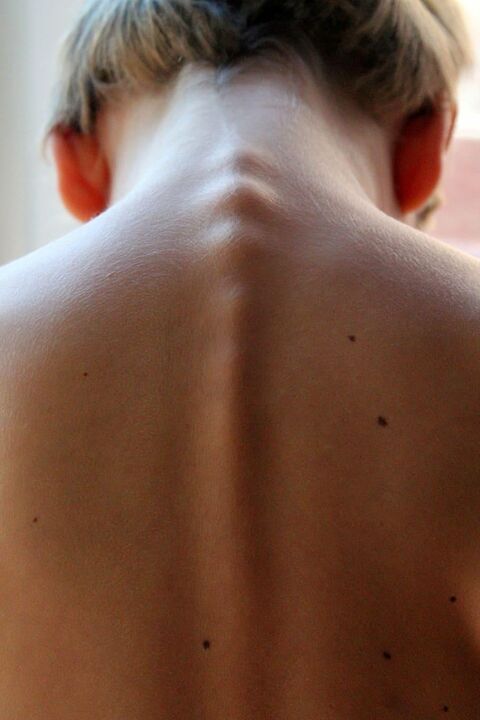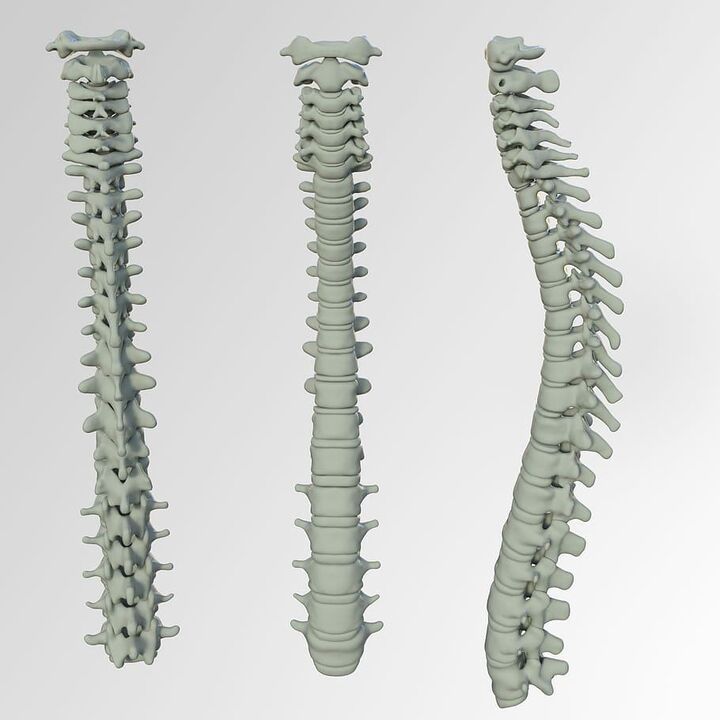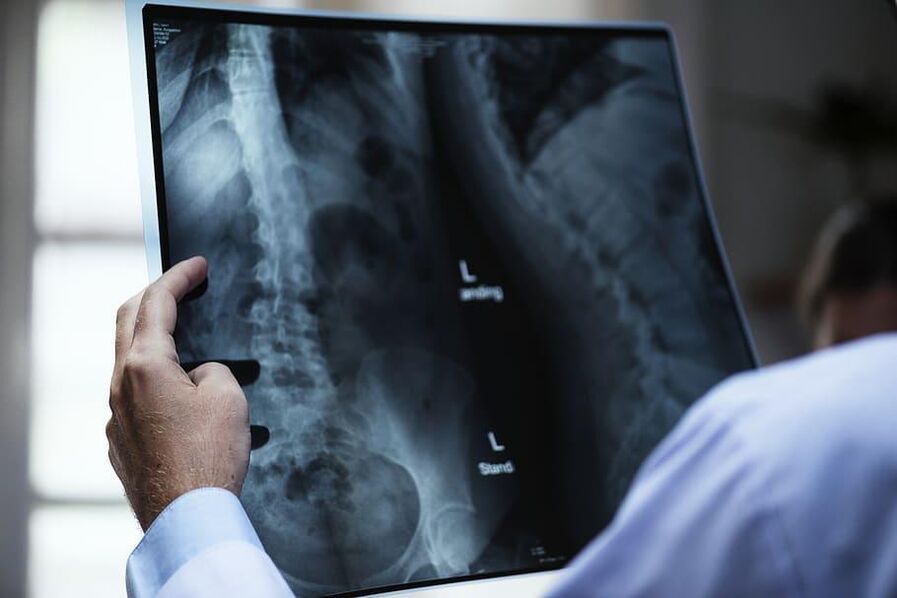Cervical osteochondrosis is a very common disease in the modern world. Many people have it in the initial phase, but don't even suspect it. The widespread osteochondrosis of the neck was due to the fact that people sit more and move less. Let us take a closer look at the reasons for the development of this unpleasant illness and the methods for combating.

What is cervical osteochondrosis?
The cervical osteochondrosis is therefore a degenerative-dystrophic disease of cartilage tissue of the musculoskeletal system. The disease is characterized by pathological changes in the structure of the cartilage, which leads to a violation of the anatomical structure of the spine elements that disturb the mobility of the skeleton and cause painful sensations. The disease can influence any part of the spine, but due to excessive mobility and miniature vortex size, the uterine segment suffers the most often from this pathology. The neck has impressive loads every day. Turns of the head and even the fact of his retention forces the vertebrae and intervertebral discs to work intensively. The intervertebral discs are thinner from the regular exposure from outside, micro -rises occur on them. Over time, their size decreases, they begin to change in a smaller way and to fulfill their main function - the depreciation of the vertebrae.
The causes of cervical osteochondrosis
The causes of the development of the disease are initially due to the age -related aging of the body and the developing destruction of bones and cartilage. The following causes of osteochondrosis can also be mentioned:

- Violation of the attitude
- Reduction of motor activity as a result of a seated lifestyle
- Excess weight that is the result of metabolic disorders has a load on the intervertebral discs
- Inheritance factor
- Long -term physical activity
- Anomalies of the spine
Symptoms of a neck osteochondrosis
The cervical osteochondrosis has specific manifestations. This is due to the anatomical features of the cervical spine. In most cases, the patients complain of the pain of different intensity, which increases from a long stay in a position. Other symptoms are often added to pain:
- Weakness in the upper limbs
- Daubiness and tingling and hands
- Stiffness when moving the head
- Dizziness (indicates that the damaged elements influenced the arteries)
- Deafness of the lips
- Feeling of a coma in the throat
Signs of cervical osteochondrosis
In medicine, it is common to separate signs of osteochondrosis based on the kind of symptomatic manifestations that are combined into a single syndrome. 4 This syndrome is differentiated:
- Koreshka - indicates that nerve rays cause pain pinched and a number of autonomous symptoms (dizziness, weakness, lumps in the throat);
- Wirting artery - damaged elements clamp the large vertebral artery, the cause of severe headaches, dizziness;
- Wirding - provokes pain in the neck itself;
- Cardial - is masked under an attack by angina pectoris, which is manifested by severe breast pain, similar to a heart attack.
Development stages of the cervix osteochondrosis
1 degree of osteochondrosis

It is characterized by the beginning of the destruction of the intervertebral discs. Cracks form in the fibrous ring, the strength and elasticity of the disc form, their height decreases, which presses the nerve roots. A characteristic painful pain appears. Sometimes such pain in the stage (preclinical) and osteochondrosis is missing with moderate symptoms in the neck.
2 degrees of osteochondrosis
If the osteochondrosis of the 1st degree was not treated or the treatment was not effective, the osteochondrosis of the 2nd degree occurs - chronic. The pain becomes constant, the destruction and seal of the intervertebral disc continues and leads to small transfers of the cervical vertebrae. With cervical osteochondrosis, a falling head syndrome can develop at this point. This syndrome is characterized by severe pain, and a person is forced to support his head in a firm state to reduce the pain.
3 degrees of osteochondrosis
The fibrous ring is almost destroyed, which leads to complications of osteochondrosis - the lead of the intervertebral disc or the intermediate removal. In 3 stages of osteochondrosis, the pain intensity can decrease, since the affected cartilage fabric in the disk between the vertebrae is no longer available, which means that there is no source of pain, but the nerve roots remains so that the pain does not leave completely.
Diagnosis of cervical osteochondrosis
If there is a cervical osteochondrosis, it is necessary to contact a medical facility in good time. A comprehensive diagnosis will help identify the disease, to evaluate it and to understand the causes of the development of the pathology. A preliminary diagnosis is carried out on the basis of inspection and palpation - with osteochondrosis, the tension of the neck muscles is determined, in some cases the deformation of the spine can be felt. After the objective diagnosis, the doctor sends the patient to additional studies. The following diagnostic methods are used to confirm the diagnosis:
A preliminary diagnosis is carried out on the basis of inspection and palpation - with osteochondrosis, the tension of the neck muscles is determined, in some cases the deformation of the spine can be felt. After the objective diagnosis, the doctor sends the patient to additional studies. The following diagnostic methods are used to confirm the diagnosis:
- Magnetic resonance imaging
- Radiography (lateral and straight)
- Computed tomography
In order to determine the cause of the development of the pathology, an ultrasound examination of the nearby organs, the EKG of the heart, the duplex scanning of blood vessels, blood tests and urine can also be prescribed.
Treatment of cervical osteochondrosis
Treatment of osteochondrosis requires an integrated approach. Pain relievers are used to temporarily eliminate pain, but the basis of therapy is physiotherapy and massage. The massage relieves muscle pressure and improves the pain. The procedures also restore the normal blood circulation and improves the supply of damaged tissue. Based on the results of the massage course, the voltage is removed from the cervix area, the load of the spine is redistributed. Drug treatment. Medicines relieve pain and inflammation, restore blood circulation and eliminate cramps in the neck muscles. For this purpose, the following drug groups can be used: glucocorticosteroids, analgesics, muscle relaxants etc. Physiotherapeutic treatment. In addition to taking medication to relax near the cervical muscles, eliminating cramps and normalizing the bloodstream, physiotherapeutic methods also help: acupuncture, laser effect, magnetotherapy, UHF therapy, phonophoresis, etc.  Therapeutic gymnastics. Special physical exercises help the patient to strengthen the muscle frame, align the attitude and to improve blood supply to the upper part of the spine. Operation is required for advanced stages of osteochondrosis of the cervical spine or the inadequate effectiveness of conservative methods.
Therapeutic gymnastics. Special physical exercises help the patient to strengthen the muscle frame, align the attitude and to improve blood supply to the upper part of the spine. Operation is required for advanced stages of osteochondrosis of the cervical spine or the inadequate effectiveness of conservative methods.
Prevention of the cervical osteochondrosis
In order to prevent the development of a neck osteochondrosis, it is recommended: when sitting, report five miner breaks when sitting and avoid loads on the neck. Do not make sharp movements of the head, monitor the attitude. Avoid hypothermia; Sports lessons, swimming; eat properly; The dream should be on a solid mattress and on a low pillow the neck angle should not be more than 15 degrees. Avoid shock pollution on the spine (jumping, running) after 25 years. If the symptoms of the disease occur, definitely visit a doctor. Not yourself!















































